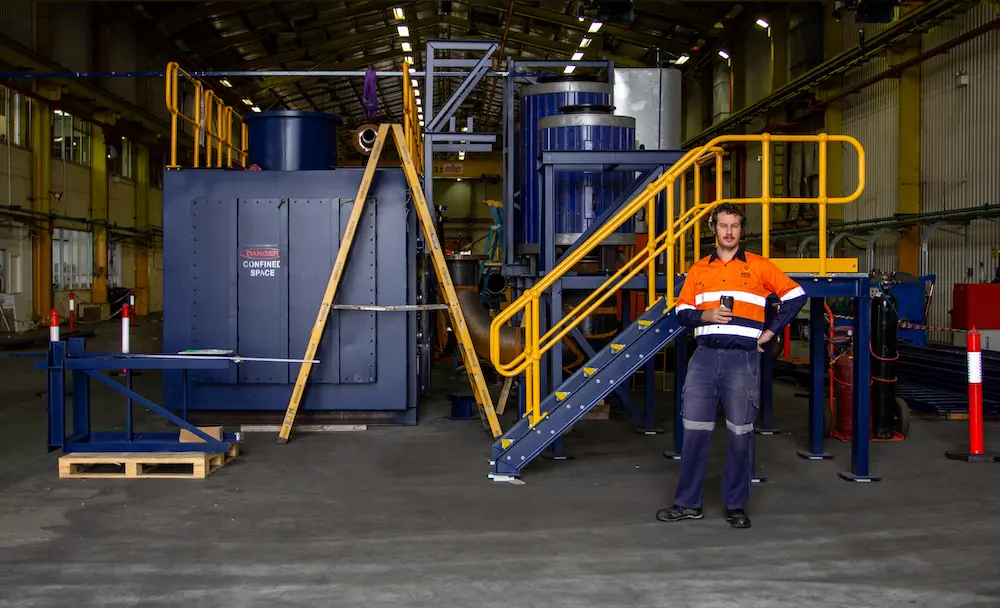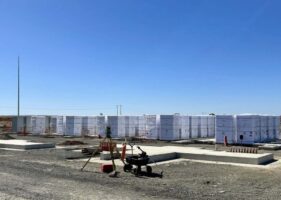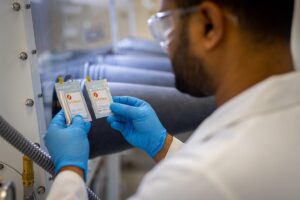Oil company Shell is sinking $560,000 into an experimental battery technology that seeks to store heat energy inside a metal block.
MGA Thermal will use the grant and technical expertise from the oil major to finish building the device in a new manufacturing factory in Newcastle, before setting the system up at its Tomago, NSW, headquarters
The $3 million, 5 megawatt hour (MWh) pilot will stack about 3700 blocks into a 12m by 3m structure with an energy density some 20 times that of a lithium ion battery. The system will charge and discharge, in the form of steam, at up to 500 kW for 10 hours.
Invented for the green age
The block uses a miscibility gap metal alloy, a technology MGA founders Erich Kisi and Alexander Post invented and perfected specifically for the impending energy storage challenge over the course of a decade at the University of Newcastle. In 2019 they turned that research into a company.
A miscibility gap is an area in a mixture or alloy where the different components don’t mix well and instead separate into two or more regions with different compositions.
Kisi and Post decided this concept could be put to use in energy storage, and over a decade they invented and developed the MGA system, which creates a block-like matrix from one metal and embeds it with an alloy that captures heat energy in a molten form. It then boils water into steam in order to dispatch that energy.
The pilot will use graphite for the block and aluminium for the alloy, in order to operate at temperatures of 400°C to 700°C.
To put it another way, think of a piece of wagyu steak: the proteins form the meat. Inside the meat are pockets of fat, which begin to melt when the steak hits the hot plate.

“We get the benefits of a higher energy density from a melting of the alloy coupled with the benefits of a solid block, such as the safety and the ability to scale up,” deputy CEO and chief commercial officer Mark Croudace told RenewEconomy.
The system uses a resistor heater to convert electricity into heat the blocks can absorb, and is released by cooling the block. Croudace says the system uses an inert gas to speed up or slow down cooling.
“The charging system and discharging system are decoupled in our design. So we have the ability to throttle up or throttle back the discharge system independently of what is coming in,” Croudace says.
“On a 24 hour basis we’re estimating energy losses of approximately 2 per cent per. Round trip efficiency is into the 90 per cents.”
The company is aiming for a 30 year life span of the system, and to date initial testing has hit about 3000 cycles. The 24 hour system can discharge at a constant rate, while at the same time charge for up to eight hours within that period.
The pilot will gather data about charging and discharging behaviour, fluid dynamics and temperature distributions, and validate its ability to store and discharge long-term thermal energy in a real life setting.
MGA Thermal secured $8 million in investment in 2021, led by CSIRO’s venture fund Main Sequence, and $1.27 million from the Australian Renewable Energy Agency (ARENA) last year.
Who will use it?
The company is targeting both electricity grid and industrial use cases and is fielding interest from engineering teams across both sectors.
“A lot of companies, especially in the harder to abate sectors, aren’t looking for renewable electricity but green steam. Our pilot plant will generate high quality industrial steam. That steam will go straight back tinto industrial processes,” Croudace says.
“The second use case is repurposing both gas and coal fired power stations. We are proposing, and working on with a number of potential clients, pulling out the front end heat source of coal or gas and replacing it with renewable energy already stored in our blocks and sending that through the power system.”
While Croudace was not able to reveal what they’re aiming the MGA will cost on a per megawatt hour basis, he says it is competitive with lithium ion batteries now.
“The economics of putting in an MGA solution are proving extremely viable… and are proving compelling.”
One use case that regularly comes up in the research behind MGA is concentrated solar thermal (CSP), which heats salts to above 500°C.
Vast, which is reprising Australia’s first attempt at a CSP plant in Port Augusta in South Australia, is spearheading a range of projects inside and outside the country. It has just ordered 13,500 sodium-ion batteries for its planned Mt Isa facility.
Capturing heat energy from industrial processes is already an interesting field in Australia, as Mars Petcare started trialling last year with a graphite battery.
European energy company E2S Power Ag promised in 2020 to use the tech to retrofit ageing cola plants in Europe, but has since moved in a different direction, Croudace says.
Note: Shell’s contribution to MGA Thermal is in the form of a grant. It is neither equity nor a loan. Apparently Shell has decided that such funding for companies that go through its game-changer accelerator is non-dilutive. It partners, provides expertise, but takes no equity – possibly to leave no imprint of the fossil fuel industry.










